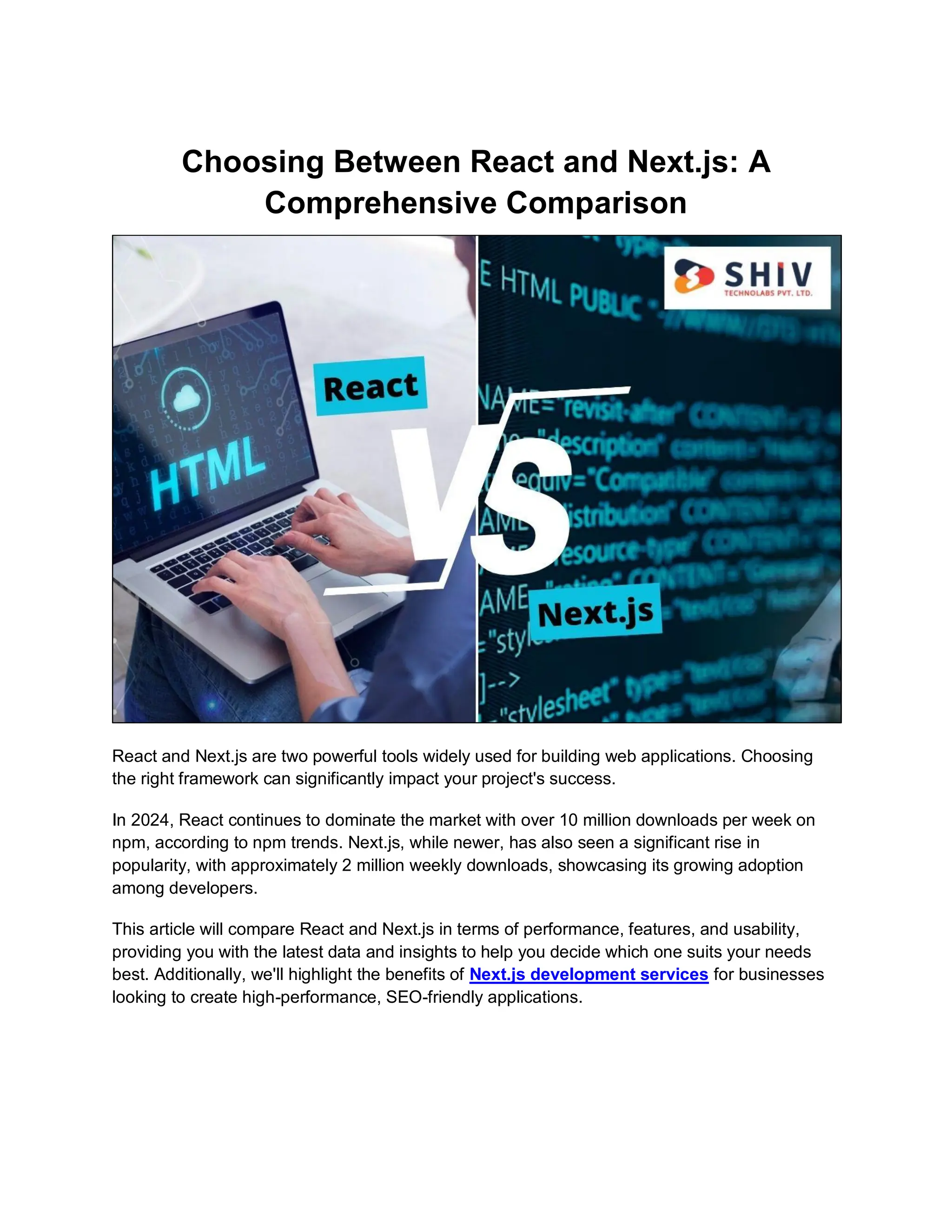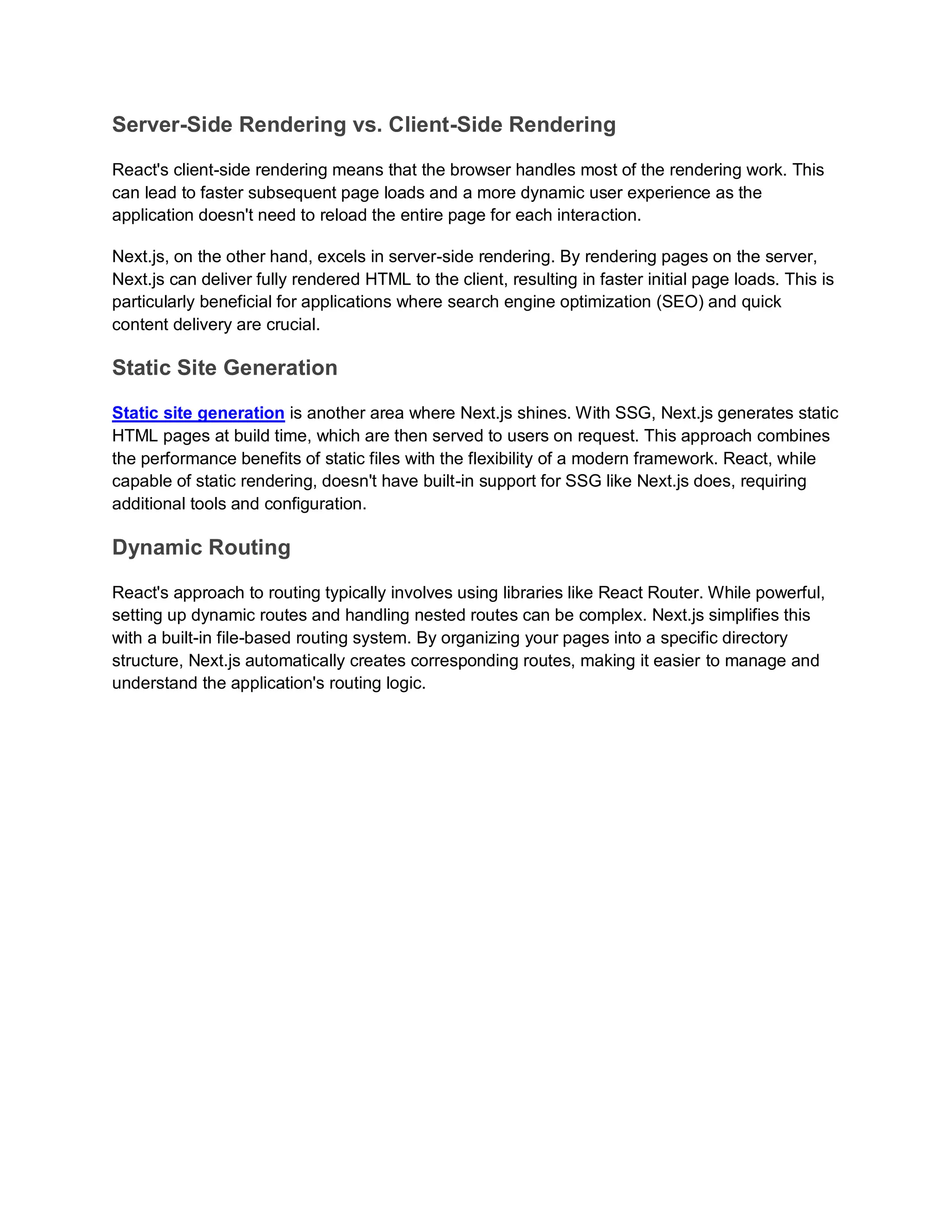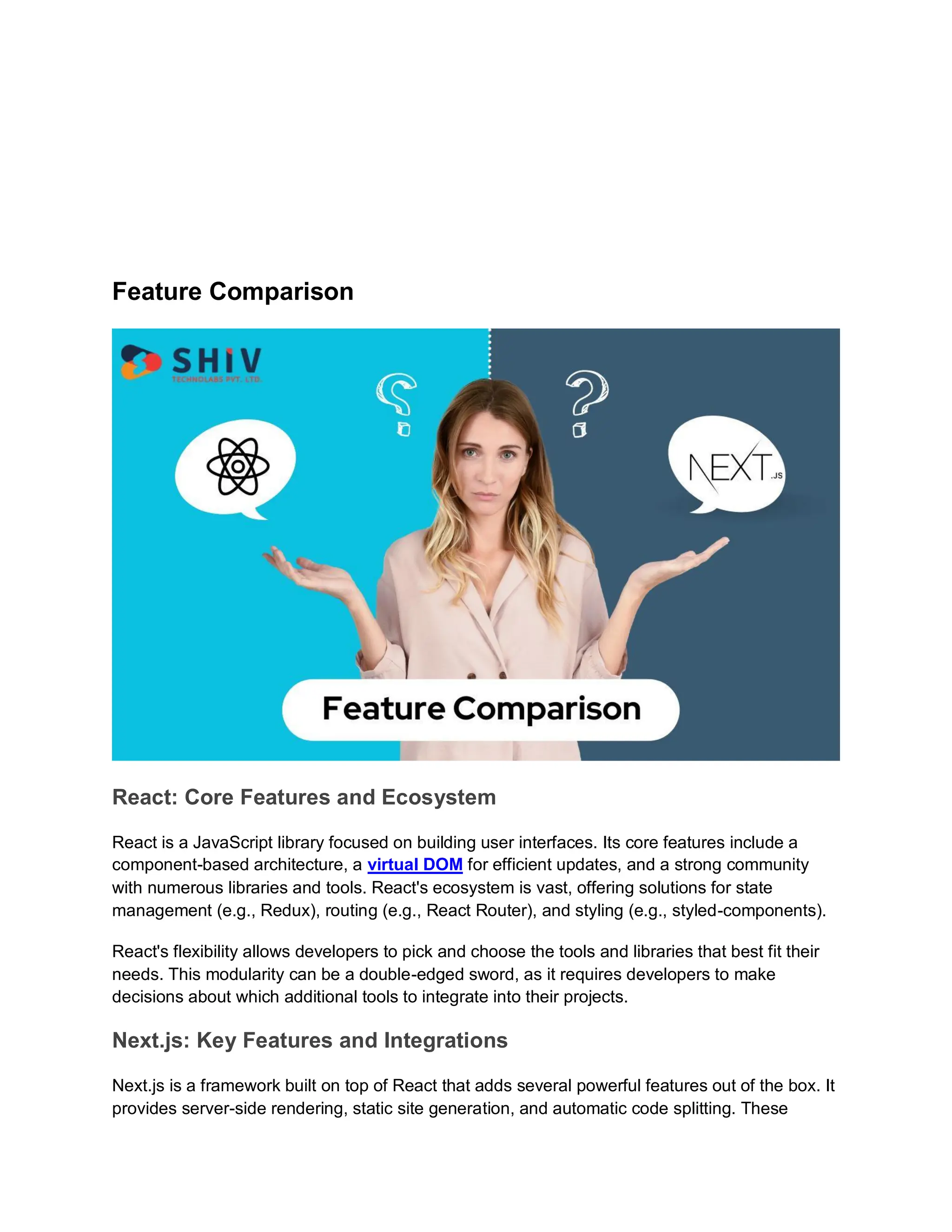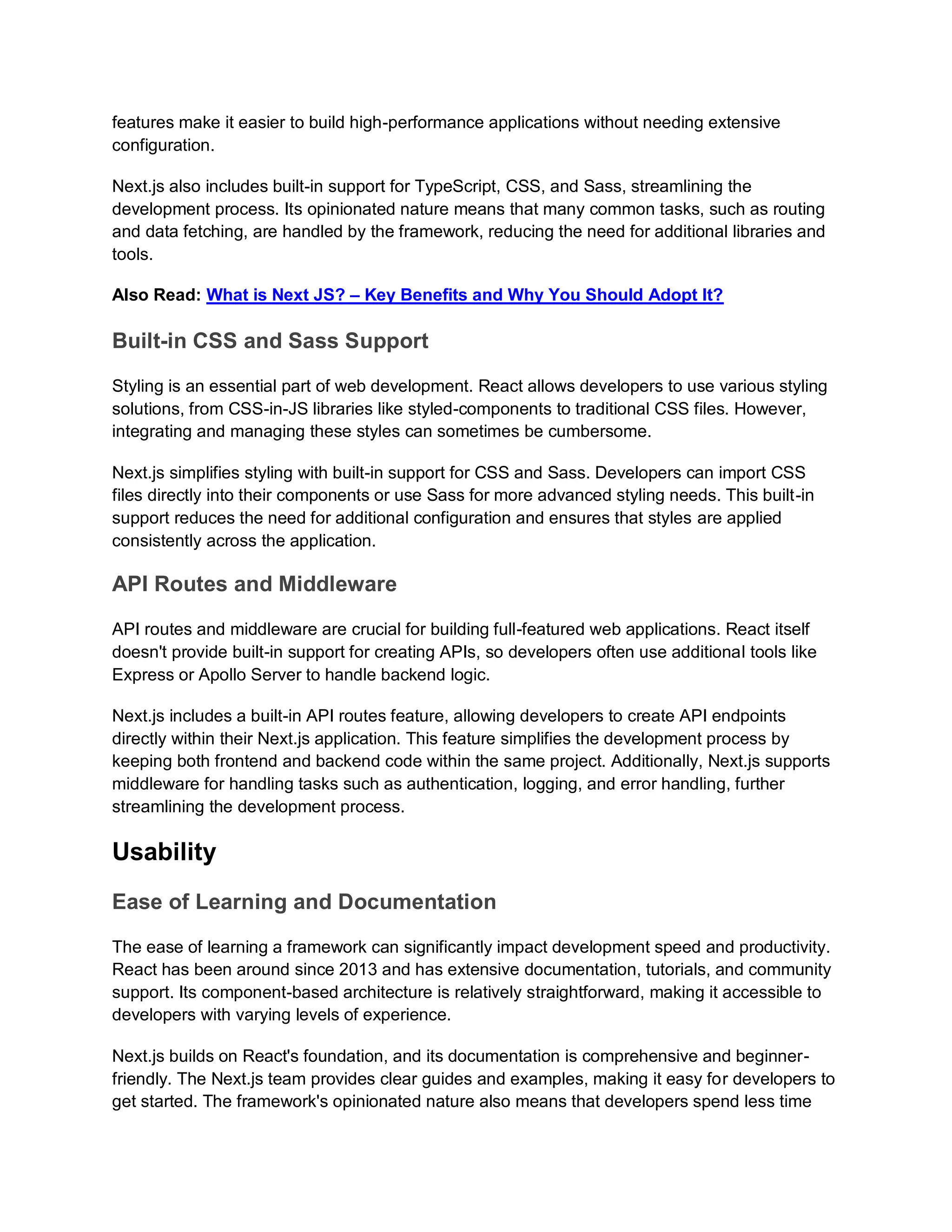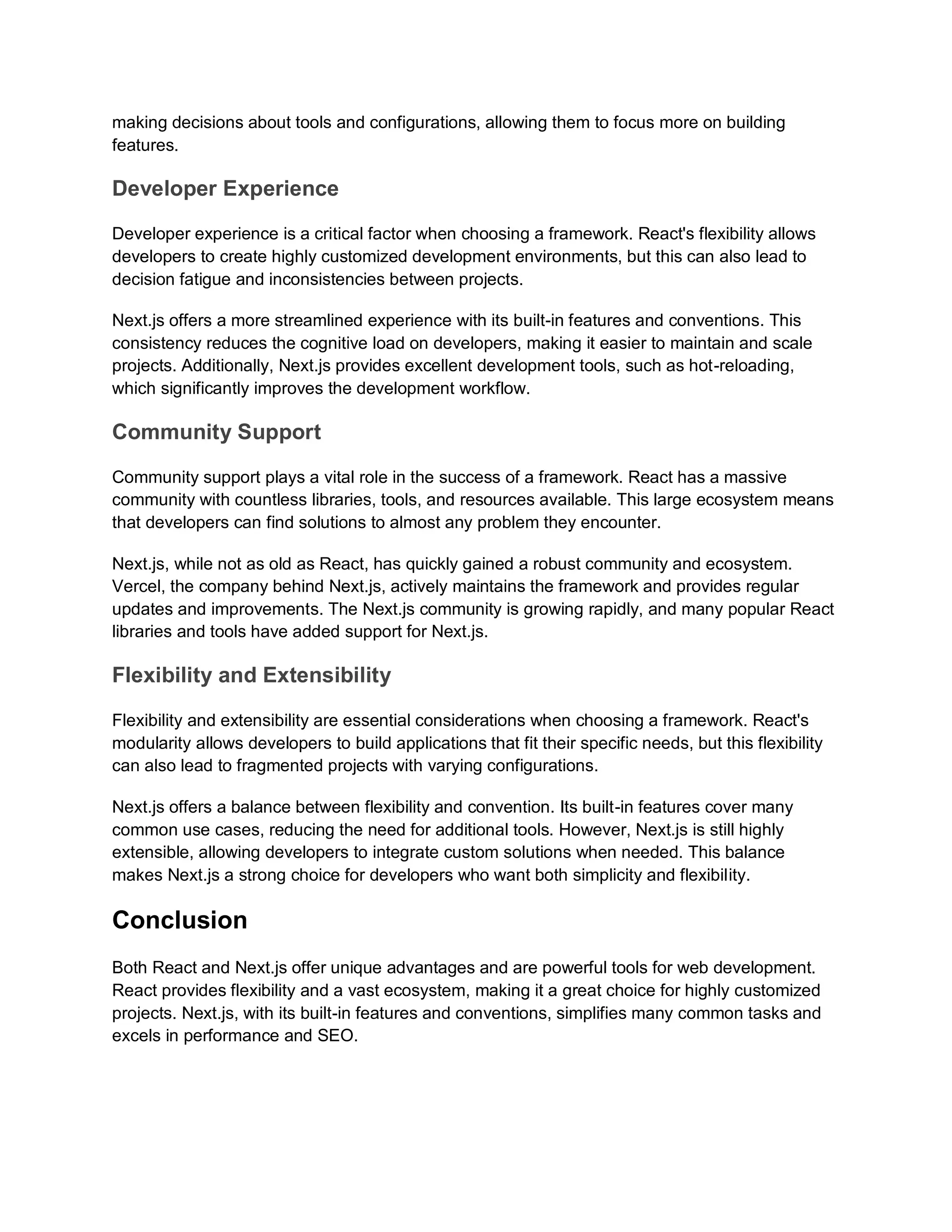The document provides a comprehensive comparison between React and Next.js for web application development, highlighting their performance, features, and usability. React is a flexible library with a vast ecosystem, while Next.js offers built-in features like server-side rendering and static site generation, enhancing performance and SEO capabilities. Ultimately, the choice between the two frameworks depends on specific project requirements and developer preferences.
